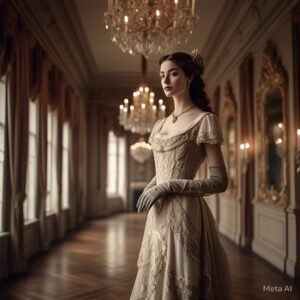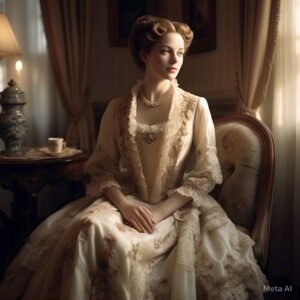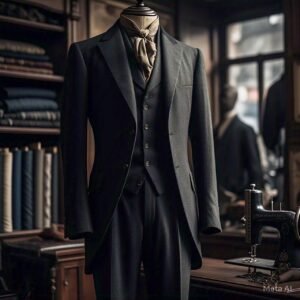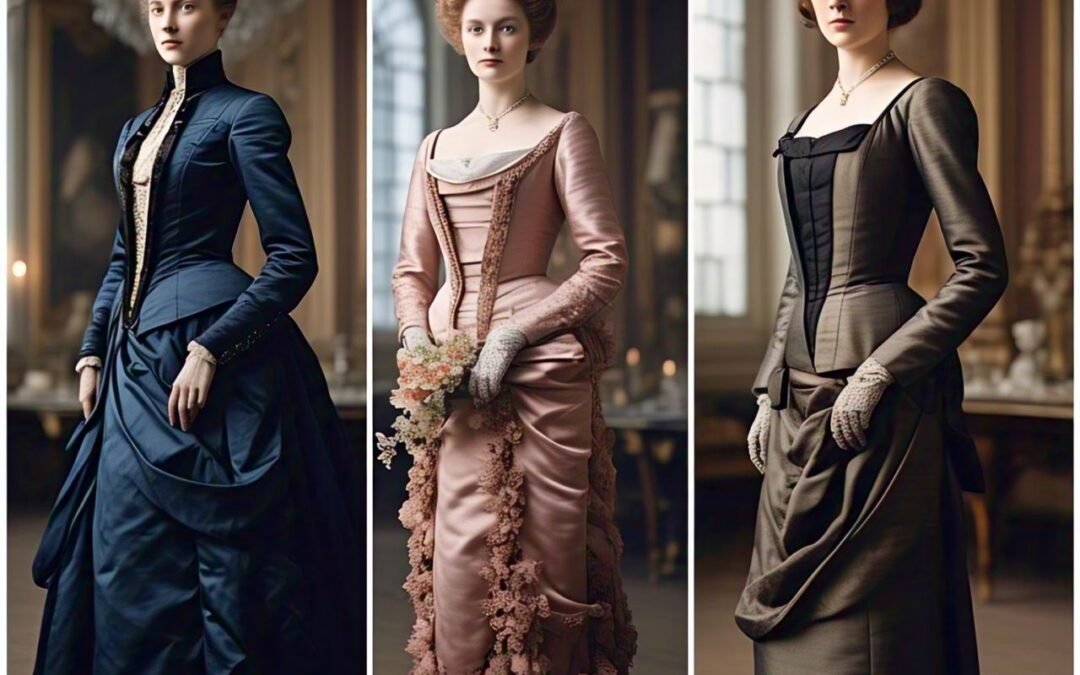1915 fashion trend marked a pivotal moment in the evolution of style, as society began moving away from the extravagant Victorian designs towards more streamlined and functional clothing. With World War I casting a shadow over Europe, fashion was greatly influenced by the need for practicality and adaptability. The 1915 fashion trends for both men and women were a blend of elegance, simplicity, and the early signs of modernization, setting the stage for more dramatic shifts in the years to come.
The Shift from Victorian to Edwardian Fashion
In the early 20th century, fashion was undergoing a significant transformation, and 1915 was no exception. The lavish and restrictive styles of the Victorian era were gradually fading away, giving rise to the more relaxed and pragmatic silhouettes of the Edwardian period. One of the most notable trends of 1915 was the gradual decline of the rigid corsetry that had defined Victorian women’s fashion. Women no longer sought to emphasize an exaggerated hourglass shape through tight corsets, but instead moved toward a silhouette that was both comfortable and flattering.
The S-Shaped Silhouette:
One of the hallmark features of 1915 fashion trends for women was the continued popularity of the S-shaped silhouette, which was largely a result of the combination of a corset and petticoat. This shape pushed the bust forward and the hips back, creating a pronounced curve that defined the body’s shape. Despite the growing awareness of the need for more comfort, the S-shaped silhouette remained fashionable and emblematic of the era. Dresses of this time featured fitted bodices and long, flowing skirts that draped elegantly, making women look both poised and feminine.

Women’s Fashion: Practical Yet Stylish
By 1915, women’s fashion was shifting toward more practical and comfortable designs without sacrificing elegance. The garments reflected the cultural changes of the time, such as a greater emphasis on physical activity, social movements, and women’s rights. As women were becoming more involved in the workforce, fashion trends were evolving to meet their needs.
Empire Waistlines and High Waist Dresses:
One of the defining features of 1915 fashion trends for women was the prevalence of empire waistlines. Dresses were designed with a high waistline just beneath the bust, a style that was reminiscent of ancient Greek and Roman dress. This design not only gave the wearer a more flowing, natural look, but also made the garments more comfortable and less restrictive than the tightly fitted dresses of earlier decades. The relaxed empire waistlines were often paired with skirts that flared out gently, providing ease of movement while still adhering to an elegant aesthetic.
Tea Gowns: A Sign of Relaxed Elegance:
In the privacy of their homes, women often wore tea gowns, a trend that became more widespread during 1915. These garments were designed for comfort and relaxation while still being aesthetically appealing. Tea gowns were typically made from lightweight materials such as silk, chiffon, or cotton, and were characterized by their loose, flowing shapes. While tea gowns were not worn for formal occasions, they allowed women to embrace a more relaxed and casual form of elegance when hosting guests or attending informal social gatherings.

Wide-Brimmed Hats and Feminine Accessories:
No discussion of 1915 fashion trends would be complete without mentioning the importance of hats. Women’s fashion in 1915 saw the continued dominance of large, wide-brimmed hats, often decorated with ribbons, feathers, flowers, and other embellishments. These hats were not only stylish but also practical, providing much-needed shade during outdoor activities. The wide-brimmed hat became synonymous with the elegance of the time, and wearing a hat was considered an essential part of a woman’s outfit for nearly every occasion.
Men’s Fashion in 1915: Tailored and Functional
Men’s fashion in 1915 was also in a state of transition. The formal, structured suits of the previous decades were beginning to give way to more tailored, fitted styles. In response to the changing social and political climate, including the onset of World War I, men’s clothing began to embrace a more utilitarian approach, focusing on comfort, durability, and practicality without compromising on style.
Suits with Narrower Cuts:
The early 20th century saw a shift in men’s fashion toward suits with narrower cuts. In 1915, suits became more form-fitting, with waistcoats and trousers designed to be more tailored. The boxy and ill-fitting suits of the late Victorian era were slowly phased out in favor of suits that had a sharper, sleeker appearance. This trend reflected the growing preference for elegance that was still accessible and appropriate for everyday wear. The trousers of the period were also narrower and more tapered, creating a streamlined look that was both modern and stylish.
Bow Ties and Neckties:
In terms of accessories, bow ties and neckties were the preferred choices for men in 1915. These ties were generally narrow and could be worn with either formal or casual outfits. The bow tie was particularly popular for formal evening events, while the necktie could be seen in both professional and social settings. Ties were often paired with shirts that had stiff, detachable collars, which added a touch of formality to the overall outfit.
Military Influence on Men’s Fashion:
The outbreak of World War I in 1914 had a significant impact on fashion trends, particularly in men’s clothing. The military influence was evident in the popularity of trench coats, which were practical and durable outerwear garments that were originally designed for soldiers but quickly became fashionable for civilians as well. These coats were typically made from heavier fabrics like wool or gabardine and featured a double-breasted design with wide lapels. The trench coat became a symbol of both military service and modern style during this period.

Women’s Fashion in Response to War
While the war had a profound effect on global events, it also shaped women’s fashion trends in 1915. As women entered the workforce in greater numbers to support the war effort, they needed clothing that was practical and versatile. Many women adopted more functional, simplified styles, and the concept of utility fashion began to emerge.
Shorter Sleeves and Lighter Fabrics:
By 1915, the trend toward shorter sleeves was becoming more pronounced. While earlier in the decade, dresses often had long, flowing sleeves, many 1915 garments featured sleeves that were shorter and lighter in design. This shift was partly due to the warmer weather and the practicality of working outside or in more active roles. Fabrics also became lighter and more breathable, with cotton and linen gaining popularity over heavier materials like velvet and brocade.
Simple, Functional Dresses:
The growing demand for women to work outside the home and participate more actively in public life led to the popularity of simple, functional dresses. These garments were often made from cotton or wool, and their designs were more minimalistic, reflecting the spirit of practicality and efficiency. While these dresses may not have had the same ornate decorations as evening wear or dresses for formal occasions, they were still designed to be flattering and elegant in their simplicity.
Conclusion: 1915 Fashion Trends as a Bridge Between Two Eras
The fashion trends of 1915 marked a time of transition. While the legacy of Victorian and Edwardian design still influenced many aspects of style, the influence of war, practicality, and the changing role of women in society ushered in new, more functional and streamlined designs. The 1915 fashion trends for both men and women balanced elegance with comfort and practicality, reflecting the cultural shifts of the time.
As the war continued and the 1920s approached, fashion would continue to evolve, but the changes that began in 1915 laid the foundation for the modern styles that would emerge in the decades to come. The styles of 1915 remain a fascinating blend of historical tradition and early 20th-century modernization, embodying a unique moment in the history of fashion.

